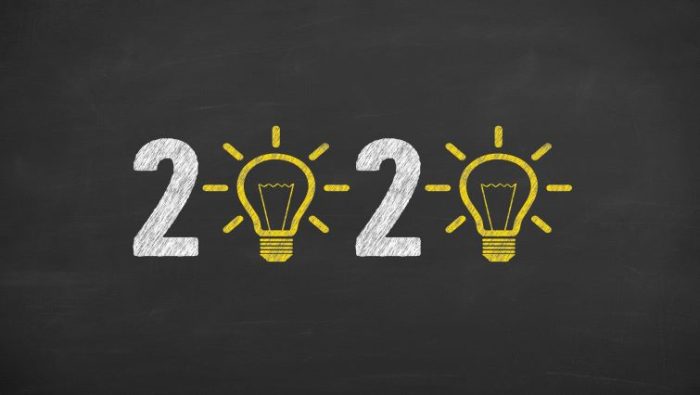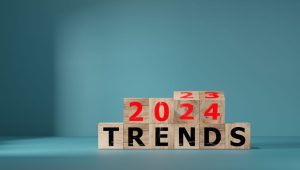The Top HR Trends of 2020
 Publié le 20 February 2020
Publié le 20 February 2020
The top HR trends of 2020 show the issues that matter most to employers and employees, and what can be done to address them throughout the coming year.
A new year – and a new decade – brings new trends in human resources which are affecting businesses in all industries. The methods that organizations use to recruit qualified candidates, onboard new employees and manage the workplace are being constantly affected by evolving technology and changing HR techniques. HR managers and recruiters face more pressure than ever before to find and train the correct job candidates, and use fewer resources to do so. It’s important for managers to stay informed regarding these HR trends, as it will allow them to recruit effectively and efficiently, while staying ahead of industry competition for the best job candidates.
Here are the top HR trends of 2020:
AI-Assisted Recruitment
Finding the right candidate for an available job role has always been important, but recruiters and HR managers are facing new challenges in 2020. With so many avenues for job seekers to find opportunities, combined with the reduction of resources at the disposal of hiring managers, there is more pressure than ever to make the correct hire right away. Using AI-assisted recruitment techniques, one of the top HR trends of 2020, is helping recruiters focus on only qualified job candidates who have a greater probability of being successful in their roles.
Psychometric testing, candidate scoring, personality tests and other AI-assisted recruitment techniques now produce a great deal of data on every candidate. This data can then be complied and ranked by AI-assisted software programs and compared to the needs of every role. These AI-assisted recruitment tools can provide valuable data, but companies need to be cautious about fully jumping onboard with this HR trend. While this type of proactive recruitment has many objective benefits, good HR managers still need to be aware of the intangible qualities a job candidate possesses that will benefit a company.
Flexibility in the Workplace
Get to work, clock in, complete your assignments, clock out, go home. This is the set workday routine that many businesses and industries have been built around for decades. It is becoming more apparent that a rigid schedule is not only non-beneficial but can actually cause harm to employees and their performance. Flexible scheduling is quickly becoming a dominant HR trend in the workplace, and appears poised to become the norm in 2020 and the following decade.
Employees are individuals, each with their own internal clocks, travel needs and schedule preferences, all of which impacts how they perform at work. Expecting everyone to adhere to one rigid schedule is unrealistic, and does not guarantee the best performance from each employee. Adopting a policy of flexibility also helps during the hiring process, as the next generation preparing to enter the workforce is overwhelmingly in favour of flexible scheduling. Instead of faceless corporate rigidity, flexibility in the workplace gives businesses a new method to get the best from their employees.
Remote Working
After establishing flexibility in the workplace as an important HR trend, it should be noted that remote workers have also become commonplace in many organizations. The most extreme example of workplace flexibility, remote workers are employees who do not work at the central office or location of a business. Using the internet, they perform their work from another location, such as their home or in a shared workplace with other remote workers. The latest SHRM survey found that 69% of businesses offered at least some amount of remote working options to their employees, while an increasing number of businesses are forgoing the traditional workplace entirely for teams of remote workers.
It’s easy to see the HR benefits of remote workers. It allows businesses to recruit from a much wider area than the city where they are headquartered, and find team members from around the world who bring valuable insights and skills. It also makes for a less crowded workplace and allows the employees themselves to have much more control of their work environment. The downside is that it is far easier for communication, scheduling and other important details to slip through the cracks. It is up to human resources managers to apply the same HR principles to remote teams as they would in a conventional workplace. This will help ensure that everyone stay on track to complete their work and reach their goals.
Reskilling & Continuous Learning
Learning in the workplace is not just something that should be done in an employee’s spare time or after hours, but rather it is a vital component of career growth. As the nature of many industries continues to change in face non-stop tech evolution, company leaders are realizing that continuous learning is an important HR trend that benefits everyone. 82% of executives cite the importance of retraining and reskilling as part of a successful career path. Employees looking to build long-term careers need to approach everything with an open mindset, knowing that their skills are not set in stone but are something to be built on over time. Employers need to provide, and even mandate, opportunities for reskilling and learning in the workplace in order to have the most highly skilled employees possible.
Companies can promote learning in the workplace in several different ways:
- Dedicated times for learning can be added into work schedules
- Employees who undergo reskilling and training can be eligible for bonus and promotions
- Apply the principles of gamification to make training more appealing and immediately rewarding
Different work environments will require different methods in order to succeed, but companies in all industries need to be aware that continuous learning is growing beyond an HR trend. It is now part of standard workplace culture in many successful organizations.
Data-Driven Decisions
As businesses deal with fluctuations in the marketplace and the labour force, they will continue to make every attempt to minimize anything they perceive as a risk. The desire to avoid risks that will use up valuable resources and financial overhead will motivate companies to make data-driven decisions. This top HR trend of 2020 encourages them to use quantifiable information and analytics to review past performances in an attempt to predict future outcomes. A recent survey found that 62% of companies reported that they have seen measurable results from taking a data-driven approach, and a further 92% of surveyed companies are increasing their use of data and AI in the decision making process. They believe that data is unbiased and impartial, leading to a more secure decision.
This HR trend poses a unique challenge from a human resources perspective, as it can be seen as a direct challenge to the “human” element. There can be many benefits to the increased use of data, as it can reveal information about a marketplace, workforce or target audience that may not be plainly visible. It is important to remember that there still needs to be qualified people at each company who are skilled enough to correctly interpret the data behind these decisions.
Employers as Brands
When looking to hire new talent, a company cannot simply rely on a simple job post to attract the best recruits. Instead, businesses need to think of themselves as brands and promote themselves as such. In the current job market, power has gradually shifted more and more in favour of the applicants. During the hiring and recruitment process, employers need to be brand-conscious and use their image to promote what they will do for their employees. A poll of job applicants found that 84% stated that the reputation of a prospective employer was an important factor in their decision to apply for an available position. Today’s generation are prepared to wait and continue searching for a job that meets their needs, or accept a role while remaining prepared to leave it for a place that does suit them.
Businesses need to have a unique brand identity, one that they cultivate and promote. It is not enough to simply release products, employers need to constantly be reaching out their customer base with a distinct voice. Adapting to this HR trend will help businesses stand out in a crowded market, endear loyalty from their existing customers and attract qualified candidates who will be excited about bringing their talent to the workplace.
These HR trends won’t just affect the rest of 2020, but will continue to play a role in the evolution of the workplace over the next decade. These trends will affect every component of a business organization, from leaders and employees to existing customers and target audiences. By analyzing the top HR trends of 2020, recruiters and human resource managers will be able to adopt policies and techniques that will give them a strong advantage and better prepares them for the future.







